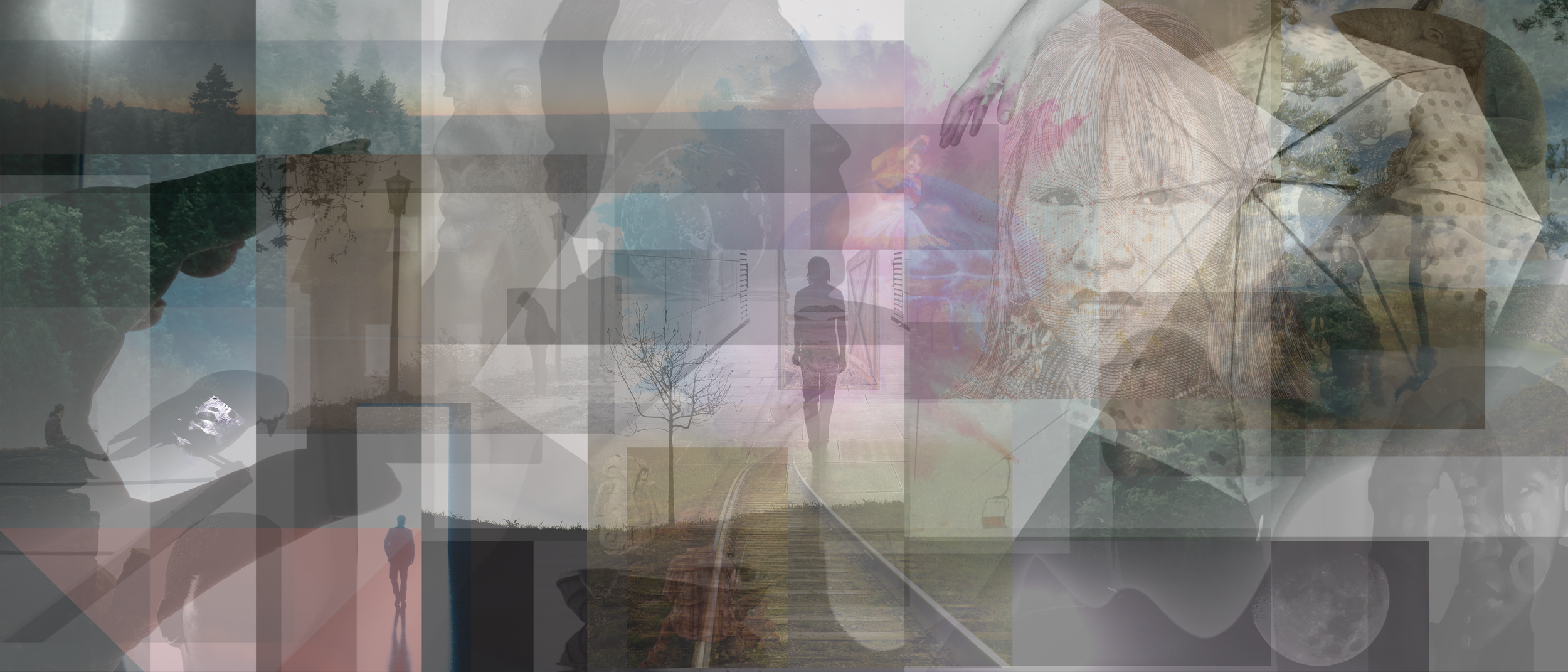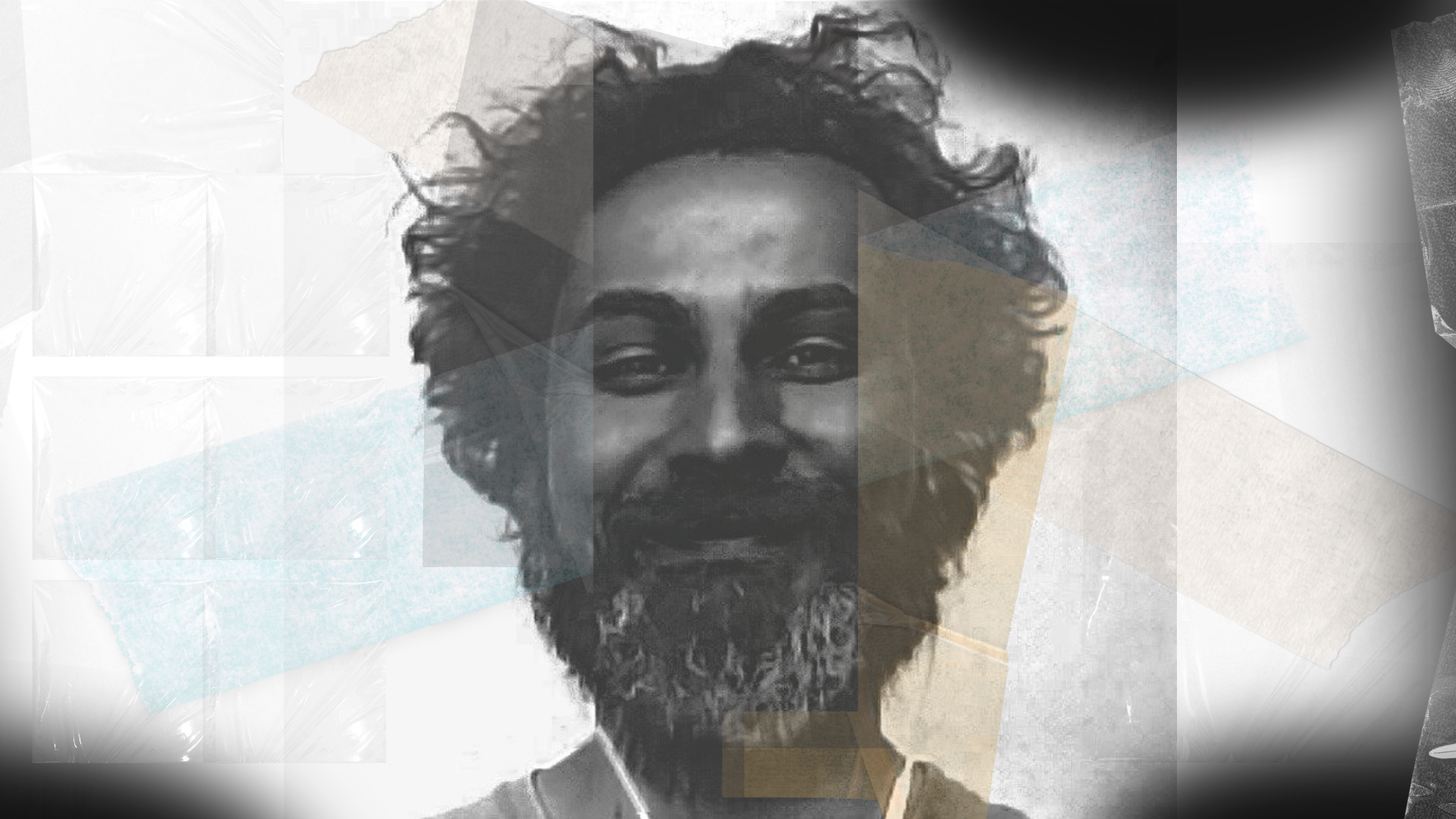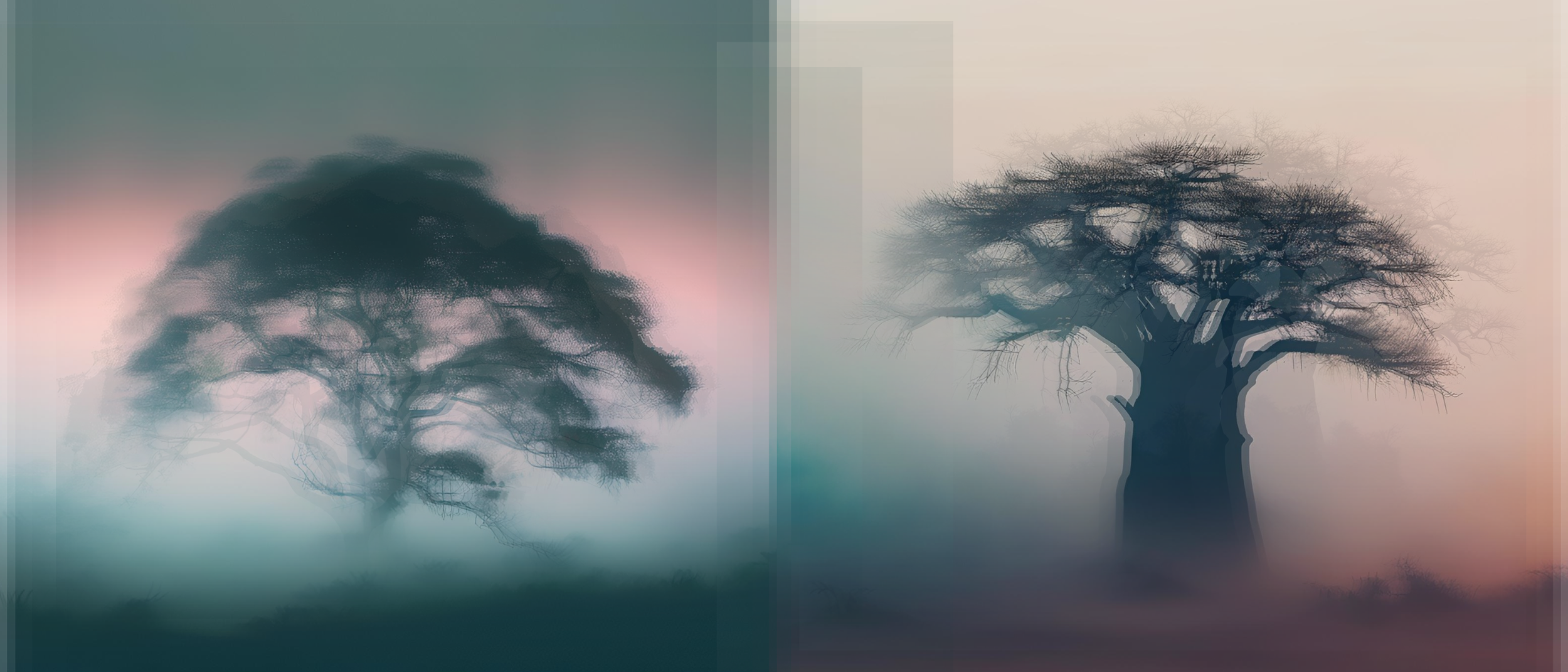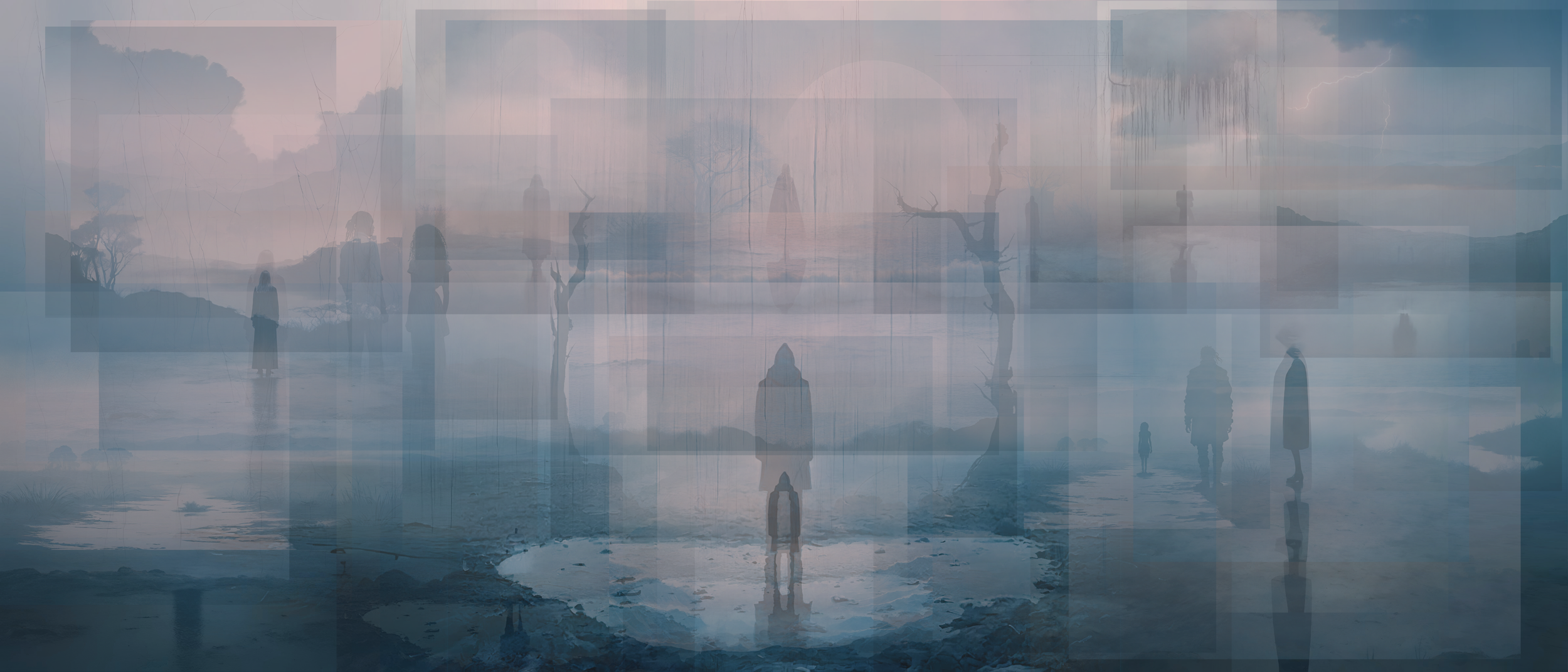
artist | polymath | public scholar | culture architect
imagine + create beyond
socially constructed boundaries

Welcome to my sanctuary
Art isn’t merely a reflection of reality—
it’s an invitation to change it. Through creativity, we can imagine new worlds and free ourselves from the confines of systems and cultures designed to control us.
My work is about…
unlocking, (re)claiming, and (re)constituting the revolutionary power of neurodiversity, culture, storytelling, and creative expression not just for me, but for all of us.
My digital home chronicles…
my personal exploration of the creativity-liberation cycle through my artistic works, research, philosophical investigations, keynotes, conversations, interviews, workshops, community projects, collaborations, and more.
Julián Esteban Torres López is an explorer of imagination and liberation. Driven by profound curiosity about creativity and revolutionary praxis, he navigates the intersections of art, culture, and ethics. Through his diverse pursuits, Julián aims to inspire and provoke, challenging conventional boundaries to foster deeper insights, empowerment, and transformation within himself and others.
Born in Medellín, Julián’s journey across academia, the arts, activism, and athletics transcends arbitrary norms. Embracing his multiply neurodivergent brain/mind and rich heritage—interweaving African, European, and Abya Yala Indigenous lineages—he approaches imagination from a perspective of infinity rather than totality. For Julián, curiosity and creativity are revolutionary pathways to liberation, celebrating the human experience and its expansive potential.
Consistently challenging conventional boundaries and reshaping narratives, Julián’s prolific work spans academia, literature, podcasting, journalism, social justice advocacy, cultural transformation, visual arts, music, sound design, curation, competitive sports, and performance art, and oral storytelling. This unique blend of intellectual, artistic, activistic, and athletic prowess establishes Julián as a true Renaissance individual of the 21st century, whose work continues to inspire, challenge, and transform contemporary discourse and practice.
FAQs
a selection
-
For me, artistic expression is characterized by a fearless embrace of the abstract, non-linear aspects of subjective experience. Rather than shy away from the intricate quantum entanglements of the human psyche, I escort myself into uncharted, imaginative territories of vast continuums of infinity.
Without judgment, I excavate my own idiosyncrasies beyond the bounds of benchmarked depths, lengths, and widths, and ferret through tunnels of immeasurable distances often intentionally obscured by the chronic smoke of strict, imploding canons constructed by fragile, nescience puritans against so-called “indecorous behavioral deviance.”
Sans barometer and criteria, I celebrate “irrationality” and the logic of dreams—even the sanity of nightmares!—as they foster my creativity by allowing unconventional symbolisms to breathe, helix twist, and flower new inheritances. There's transformative power in accepting these inner workings of the mind, and so I continue to explore the shapelessness of my spectral consciousness.
By mining my interiority in search of symbolic richness, I forge connections between the personal and the universal, and unearth once-latent layers of meaning and complexity I’d previously speculated as unimaginable… as mere phantasmic mirages of miracles and myth.
-
We don’t show up as fractions; yet too many communities are intersectional only in theory, not in practice. As a result, I am learning to be more kind to myself… to gift myself grace. For example, I am committed to not hold my neurodivergent brain to the standards of neurotypical brains. This is part of my intentional self-decolonization efforts... of my healing journey... my rematriation.
I believe objective value standards are socially constructed myths, so in much of my work I embrace the subjectivity of human experience to get a better vantage point of our conditions as persons. For instance, often in my creative writing—maybe because of my aphantasia and other comorbidities—I don’t envision the piece or want it to simply remain on the page.
My intent bends towards a timeless, conceptual conversation… an abstract, auditory experience... because the vibrations of things carry the emotions of things, and I feel things very deeply... and my desire to connect is so intense that I sense language alone—left to decompose on a paper bed—does not entertain the fluctuation of my oscillating spiritual pulse or capture the wavering temblors of the voices caught in my throat with any seriousness.
It is only when you touch the weight of the sound of my synesthetic hand holding yours... when you feel my ring finger pluck a G when I meant to strike the E... this will be the nearest path toward embracing the depths and widths of my Dasein... of the experience of me being that is particular to being human as me. So, if you are genuine about meeting me, knowing me… about experiencing the vulnerable, honest, and raw essence of my work, my words may not be as relevant as my music.
-
Capitalism seeks to create status quo relationships. It tries to recalibrate toward the average because the average is where most people are, and the most people, in aggregate, can bring in the most profit. Further, the competition it creates is a competition to appease the comforts of the status quo. The gatekeepers are also those who have historically been those who influence the status quo. And since they are at the forefront of the status quo, which is where and how they gained their power, their inclination is to keep the structure intact, not to disrupt it. This means that to be successful in such a system, you have to follow certain arbitrary rules, but it is precisely the creation of rules around creative, imaginative, and artistic expression that is the anti-thesis to their manifestation. You can directly measure the strength of our freedom and liberation by how much an artist can truly express themselves in the public sphere. And though in a so-called democratic, capitalist system it is in theory ‘possible’ for any and all forms of artistic expression to be commodified, the reality is that in actuality the very lifeblood of this system is to confine and restrain imagination, creativity, and their manifestations. Under duress and coercion of the system’s essential pulse itself, the titans of industry in the private sector shape and restrict how and what will be allowed to be expressed in the public square by creating the following restrictions and parameters: A, B, C, and D. Now, why is the status quo or a recalibration to the ordinary and general so detrimental for creative, imaginative, and artistic expression? Because to be truly liberated we have to not only be encouraged to more closely align ourselves to infinity, but we would need an environment that is conducive for actually advocating for, amplifying, funding, celebrating, appreciating, accepting, and uplifting the extra-ordinary, the margins, the so-called deviant and the disordered, the out of wack, the out of step and out of line, the undervalued, overlooked, silenced, exploited, the erased, and the forgotten. But if this is the case, then true liberation would be a direct disruption to the scaffolding holding up the democratic, capitalistic system itself since, by definition, it’s motivation is toward making life ordinary, to making a life that has a reference point to stick to, to making a life that is repetitive and predictable and comfortable, to making a life whose default is not discomfort or disruptive or extraordinary because by doing so, by definition, it would not be common, ordinary, or average. The system also is inherently based on hierarchies of value, and those people, ideas, behaviors, and things that fall in the bottom rungs of the hierarchy are intentionally tried to be removed, erased, or kept clandestine because it is those things that bring a challenge and discomfort to those benefiting from the current order of things. The environment we would need for humanity’s greatest form of creative, imaginative, and artistic expression, therefore, cannot be capitalism. Though it may appear counter-intuitive, it is precisely competition, instead of collaboration, that injures the essence and spirit of creativity, imagination, and art. If you start the creative process with rules, if you start the process with what is and isn’t allowed to be expressed or valued to be expressed, then at the very beginning you are creating an environment for restricting art and art’s cultural and societal value. If you ever wonder why art in popular culture tends to all feel, sound, and be the same or at least rhyme with each other, this is why. Competition in art in a capitalist system does not yield nor truly award innovation or experimentation. Instead, it awards what has worked in the past. It always looks toward replicating the past when moving forward. Meaning, it researches what has worked in the past to be able to determine what is worth investing in the future so it can produce the most profit for the investors. It’s not about art for art’s sake, it’s about commodifying art, which means art is relegated to a means toward creating profit. Art in capitalism can never have inherent value in and of itself. Art can never be the end in and of itself because everything in a capitalist market is commodified in one way or another to varying degrees. The goal of capitalism is to have the ability to commodify everything, and I mean everything. Art, in essence, cannot be commodified. Art, in essence, is an end in itself. The creative expression is priceless because it is not commodifiable. If the intention of the creation of art is to become a tool for increasing one’s power and place in society, then is it really art or simply a product in the cloak of art? Something can appear as art. Yes, things can be artistic on the surface, it can be optical and performative, but it doesn’t mean it is art. Part of the essence of art is its relationship to the infinite, to the ability to explore curiosity without restrictions, which, by definition, cannot be commodified or totalized. Once you make art, or at least the process of creative, imaginative, and artistic expression a means, it is no longer art or authentic artistic expression. If the creator’s responsibility is not to do justice to the artwork but to appease the greed and values and comforts and tastes of the status quo or the patron, then from the very beginning the orientation is not toward allowing art and artistic expression to reach its full potential or in the direction of its full potential. From the start, from that initial intent, we clip our own wings or the system clips our wings as creators, thereby stunting our ability to ever truly be liberated and free. A necessary condition for true liberation is the artist’s ability to fully express themselves. Once artistic expression is restricted, whether it be via authoritarian or libertarian political spectrums or between capitalism or communism economic spectrums, whether through force, coercion, or duress, you have already created the conditions for our intrapersonal relationships, interpersonal relationships, societal relationships, and cultural relationships to never be liberated. What you’ve created is the condition for acting our of fear of punishment in said relationships and contexts, and once fear is the driver and sets the parameters of imaginative, creative, and artistic expression, then clipped are our wings. We’ll never be able to fly, regardless of how many times you tell us it’s possible. No matter how many times you redefine language so jumping is considered flying, to running being considered flying, to walking being considered flying, to crawling being considered flying, to sitting being considered flying, to sleeping being considered flying, to death being considered flying… unless flying is actually flying (unclipped wings allows for flight), then every redefinition is merely gaslighting and delusional. To expand on Marx (my additions in bold): “Our mutual alienation from the human essence (which is imaginative, creative, and artistic exploration and expression) is so great that the direct language of this essence seems to us to be an affront to human dignity, and in contrast the alienated language of the values of things seems to be the language that justifies a self-reliant and self-conscious human dignity.” In short, human beings are seeds, and to flourish to our full potential like our essential nature dictates, we need fitting nourishment. It is not just, good, or enough to have this full development of the human simply remain a possibility for individuals and society if we can make it an actuality for everybody. Only then, when we actualize this possibility, will the direct language of our human essence not be an affront to our human dignity. Only when our ability to explore and express our imagination, creativity, and artistic potential will the direct language of our human essence not be an affront to our human dignity. Now, whether or not we should as individuals and as communities be always working toward reaching our full potentials instead of existing and belonging in nature, that’s a different question altogether.
-
We are more than our suffering. We are also amazing creatives, intellectuals, problem solvers, storytellers, and innovators. We are curious explorers of what it means to be fully human. This includes joy; and our celebrations are sacred experiences. I'm often invited to speak on the relationship between storytelling and social justice, but I really wish to also speak more on artistic craft, on innovation, on creative expression. I have a lot to say, and I create a lot. Beyond my consulting and workshops; beyond my books, podcast, and keynotes; beyond my activism and being the founder of The Nasiona, I am ARTIST


































